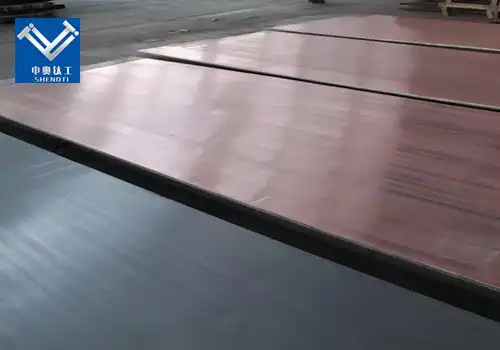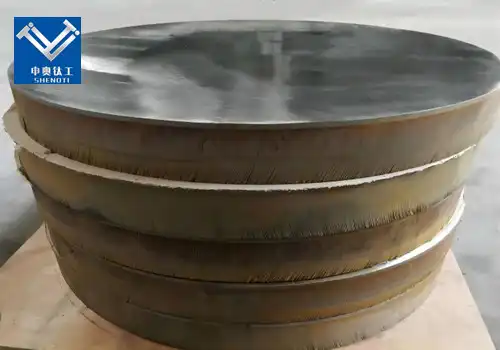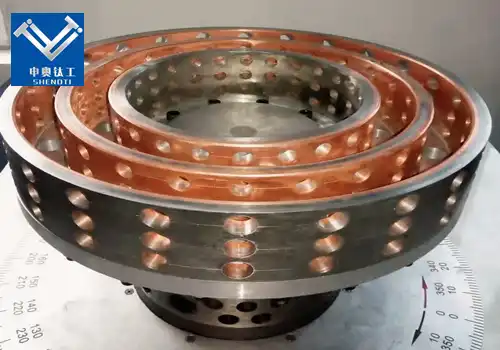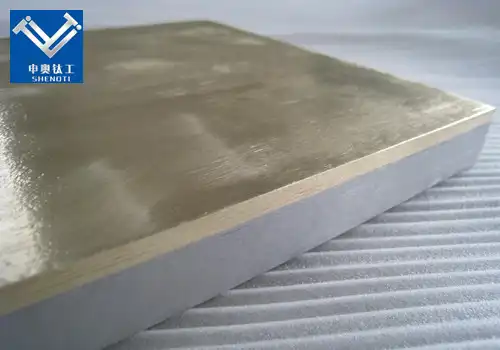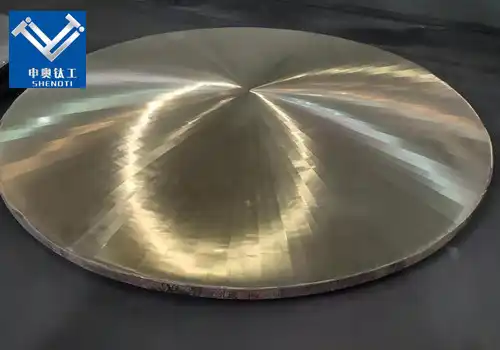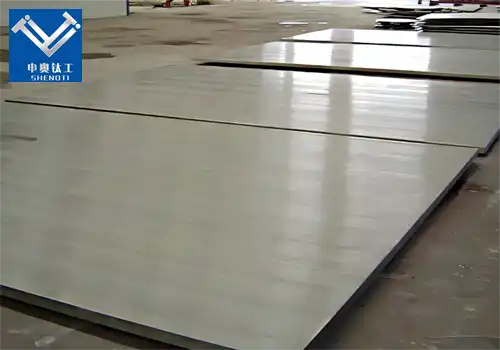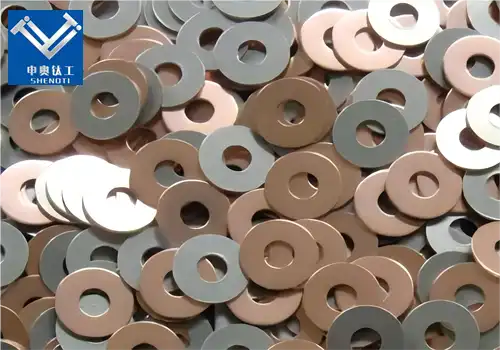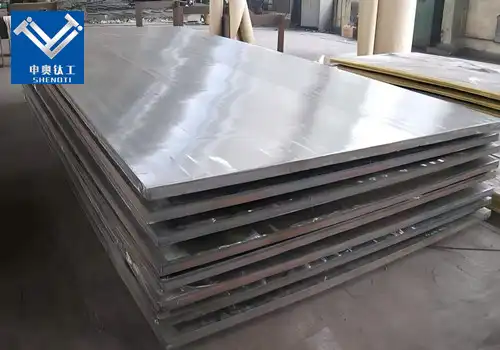
Advantages of Aluminum-Titanium-Steel Clad Plate for Engineering Design
2025-07-21 16:46:31
In the evolving world of materials engineering, the Aluminum-titanium-steel clad plate stands out as a revolutionary solution. This advanced multi-metal composite combines the unique advantages of aluminum, titanium, and steel into one high-performance, cost-efficient material. Whether you're designing for aerospace, marine, chemical processing, or new energy systems, aluminum-titanium-steel clad plates offer a perfect balance of strength, corrosion resistance, and thermal performance.
What is an Aluminum-Titanium-Steel Clad Plate?
An Aluminum-titanium-steel clad plate is a multi-layer metal composite fabricated through advanced solid-state bonding techniques such as explosive welding or hot rolling. It consists of three layers:
Aluminum Layer: Offers lightweight and excellent thermal conductivity.
Titanium Interlayer: Provides superior corrosion resistance and acts as a transition metal for effective bonding.
Steel Base Layer: Delivers high mechanical strength and structural stability.
Key Features of Aluminum-Titanium-Steel Clad Plate
High Bonding Strength
Corrosion Resistance in Harsh Environments
Excellent Thermal Conductivity
Mechanical Strength with Reduced Weight
Cost-Efficiency by Material Substitution
Why Choose Aluminum-Titanium-Steel Clad Plate Over Traditional Metals?
Traditional single-metal solutions often fall short in meeting the increasing demands of performance and cost. With the Aluminum-titanium-steel clad plate, industries benefit from material hybridization, achieving properties that no single metal can offer alone.
Applications of Aluminum-Titanium-Steel Clad Plate in Modern Industries
1. Aerospace and Aviation Engineering
Lightweight yet strong, these clad plates reduce aircraft weight without compromising safety. The titanium layer resists fatigue and corrosion from jet fuel and atmospheric conditions.
2. Chemical Processing and Petrochemicals
In reactors, heat exchangers, and pressure vessels, the Aluminum-titanium-steel clad plate withstands corrosive acids, chlorides, and saline environments. Titanium prevents metal leaching, ensuring long service life.
3. Marine and Offshore Platforms
Saltwater corrosion is a primary concern in marine structures. Titanium offers robust protection, aluminum reduces weight, and steel ensures mechanical integrity—making this clad plate ideal for shipbuilding and offshore platforms.
4. New Energy and Battery Systems
In lithium battery systems and hydrogen storage units, Aluminum-titanium-steel clad plates are used for their excellent conductivity, resistance to corrosion from electrolytes, and high strength-to-weight ratio.
Manufacturing Process of Aluminum-Titanium-Steel Clad Plate
1. Material Preparation and Surface Treatment
To ensure metallurgical bonding, surfaces of aluminum, titanium, and steel are cleaned, degreased, and treated to remove oxides.
2. Explosion Welding or Hot Rolling
Explosion Welding: A high-energy controlled detonation bonds the layers at the atomic level without melting. It ensures strong adhesion and preserves each metal’s properties.
Hot Rolling Bonding: Layers are pressed under high temperature and pressure, facilitating diffusion bonding for high structural uniformity.
3. Heat Treatment and Stress Relief
To improve mechanical properties and relieve residual stresses, the composite plate undergoes heat treatment at precisely controlled temperatures.
4. Final Finishing and Inspection
Ultrasonic testing, shear strength testing, and surface inspections are conducted to verify bonding quality, thickness uniformity, and surface flatness.
Advantages of Aluminum-Titanium-Steel Clad Plate for Engineering Design
1. Optimized Weight-to-Strength Ratio
Replacing thick stainless steel with lightweight aluminum while retaining the steel base significantly reduces the overall structure weight—ideal for aerospace, transport, and mobile platforms.
2. Corrosion Resistance in Multiphase Environments
The titanium layer blocks aggressive ions such as Cl⁻, making these plates suitable for highly corrosive media like seawater, hydrochloric acid, or industrial gases.
3. High Thermal Efficiency
Aluminum and titanium both offer excellent thermal conductivity, ensuring effective heat dissipation in systems like reactors, battery enclosures, and power converters.
4. Cost Reduction via Material Integration
By combining expensive materials (like titanium) only where needed, Aluminum-titanium-steel clad plates deliver performance benefits at a lower cost than solid titanium or nickel-based alloys.
Technical Specifications of Aluminum-Titanium-Steel Clad Plate
Thickness Range : 2mm – 100mm
Plate Width: Up to 3000mm
Bonding Strength: ≥135 MPa (Shear)
Tensile Strength: 300–800 MPa
Corrosion Resistance: Up to Grade 1 Titanium Performance
Operating Temperature: -40°C to 300°C (Depending on Application)
How to Customize Aluminum-Titanium-Steel Clad Plate for Your Application
1. Choose the Right Alloy Combination
Options include:
Aluminum: 1050, 1060, 3003, 5052
Titanium: Gr1, Gr2, Gr7
Steel: Q345R, 16Mn, SS400, 304
2. Specify Cladding Thickness
Depending on corrosion protection requirements, the titanium layer can range from 0.5 mm to 5 mm, with aluminum typically 1–10 mm.
3. Select Bonding Process
For pressure vessels: Explosion welding is preferred
For structural applications: Hot rolling is ideal for consistency
4. Define Surface and Edge Treatment
Plates can be supplied with polished, brushed, or sandblasted surfaces, and with or without edge trimming depending on installation requirements.
Quality Standards and Certifications
To ensure product quality, Aluminum-titanium-steel clad plates are manufactured in compliance with:
ASTM B898 / ASME SB898 (Explosion-bonded clad plates)
GB/T 8547 / GB/T 26492 (China National Standards)
ISO 9001:2015 Certified Manufacturing Process
Ultrasonic NDT and Shear Testing Reports Provided
Global Market Demand for Aluminum-Titanium-Steel Clad Plates
With the rising emphasis on lightweight, corrosion-resistant, and energy-efficient materials, global demand for clad metals has surged. Asia-Pacific, North America, and Europe are leading regions in adoption, particularly in the sectors of:
Green hydrogen production
Lightweight vehicle manufacturing
Desalination and water treatment plants
High-pressure chemical reactors
Sustainability and Recycling Benefits
The Aluminum-titanium-steel clad plate contributes to greener manufacturing by:
Reducing overall material usage
Extending service life of infrastructure
Enabling recycling of individual metal layers post-use
This makes it not just a high-performance solution but also an environmentally responsible choice.
Conclusion: Why Invest in Aluminum-Titanium-Steel Clad Plate?
The Aluminum-titanium-steel clad plate represents the future of advanced engineering materials. It offers the unbeatable synergy of lightweight aluminum, corrosion-resistant titanium, and strong steel—providing industries with customized, cost-effective, and reliable performance.
Whether you are in aerospace, chemical processing, marine engineering, or energy infrastructure, upgrading to aluminum-titanium-steel clad plates will optimize your systems for the next generation of performance and durability.
Contact Us for Customized Clad Plate Solutions
We are a professional manufacturer of Aluminum-titanium-steel clad plates, offering custom sizes, bonding methods, and alloy combinations to meet your project requirements.
Telephone:18729731603
Email: zh@baojiti.com.cn
Website: shenaocladplate.com
Location: Baoji City, China – Nonferrous Metal Processing Center
YOU MAY LIKE











